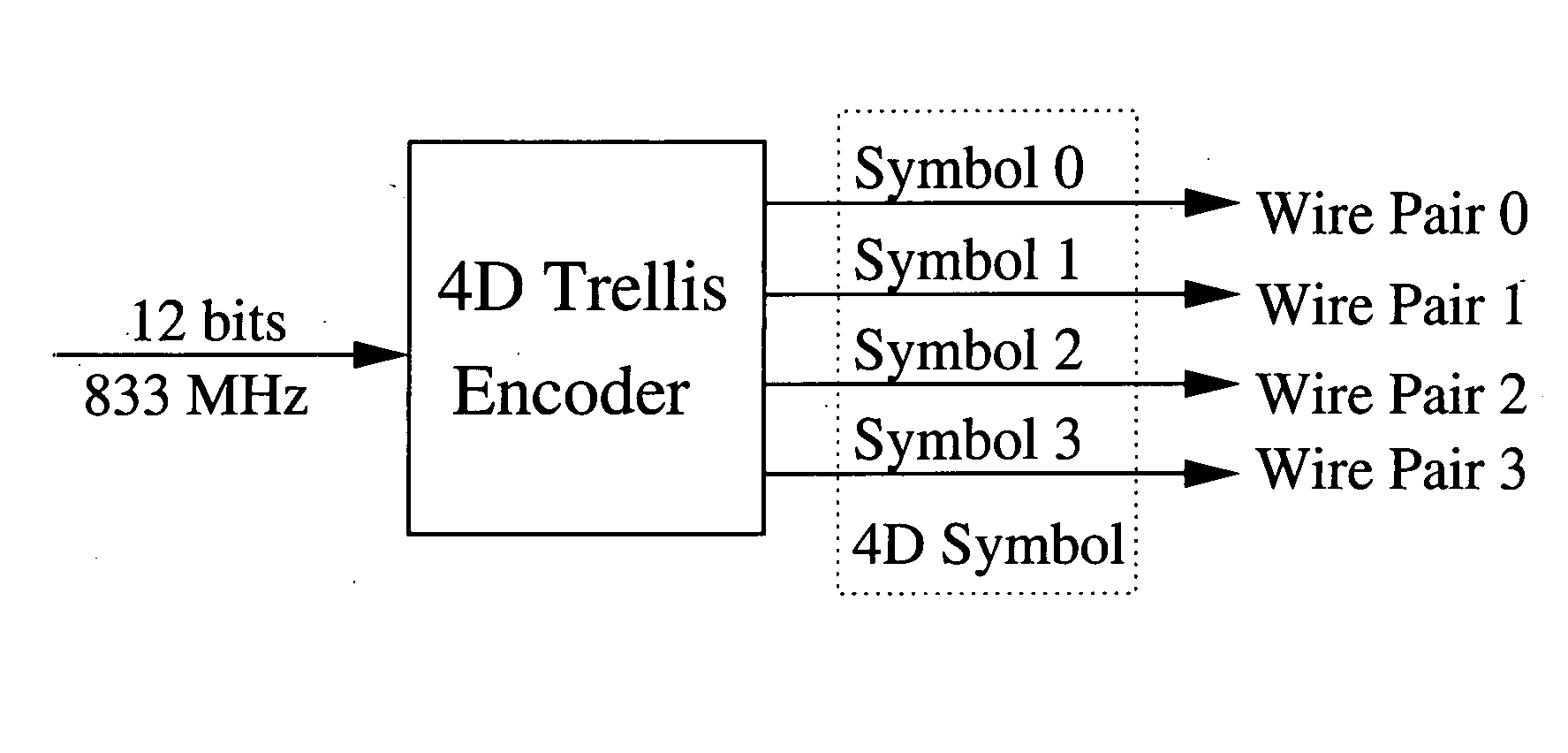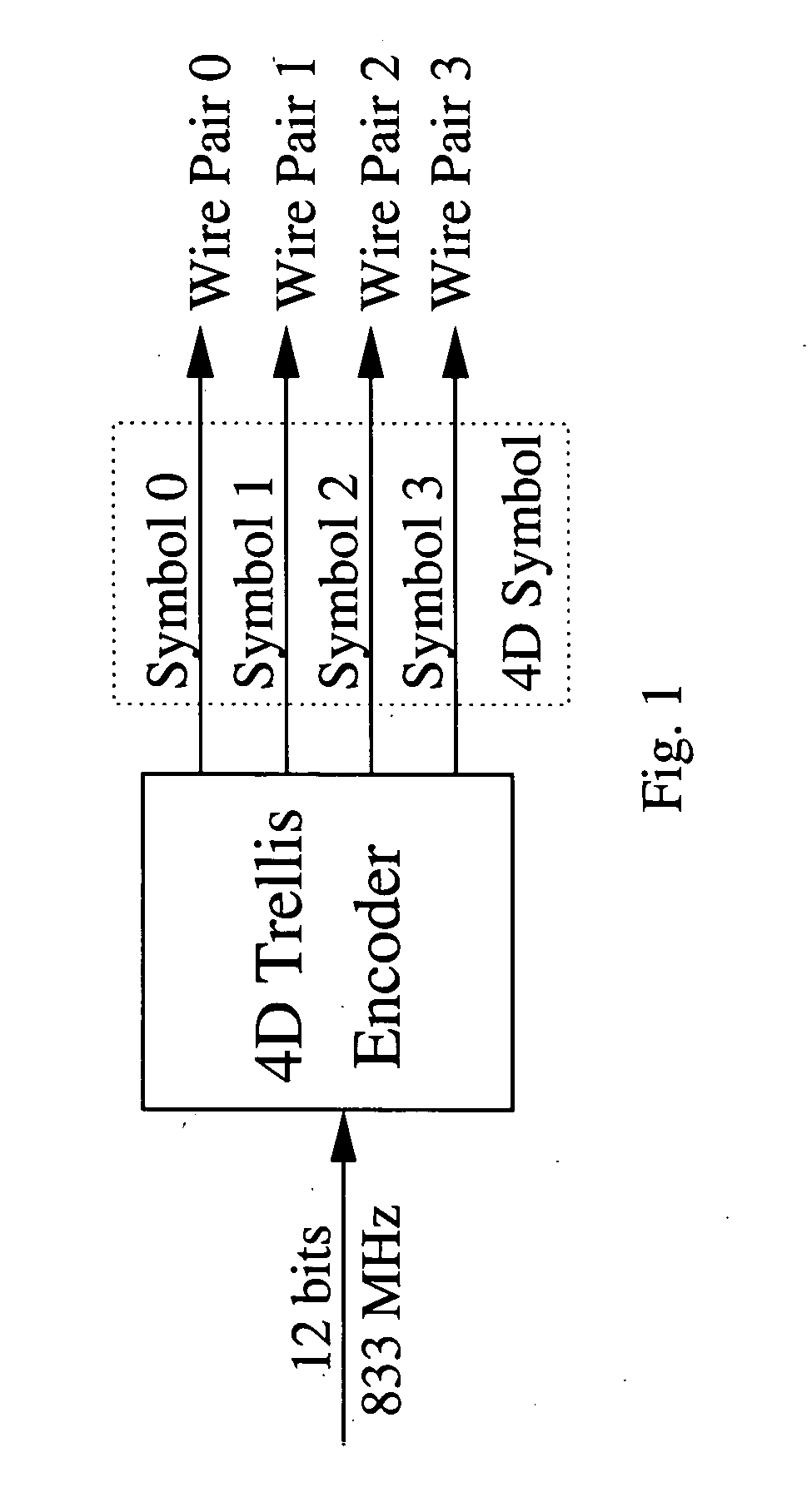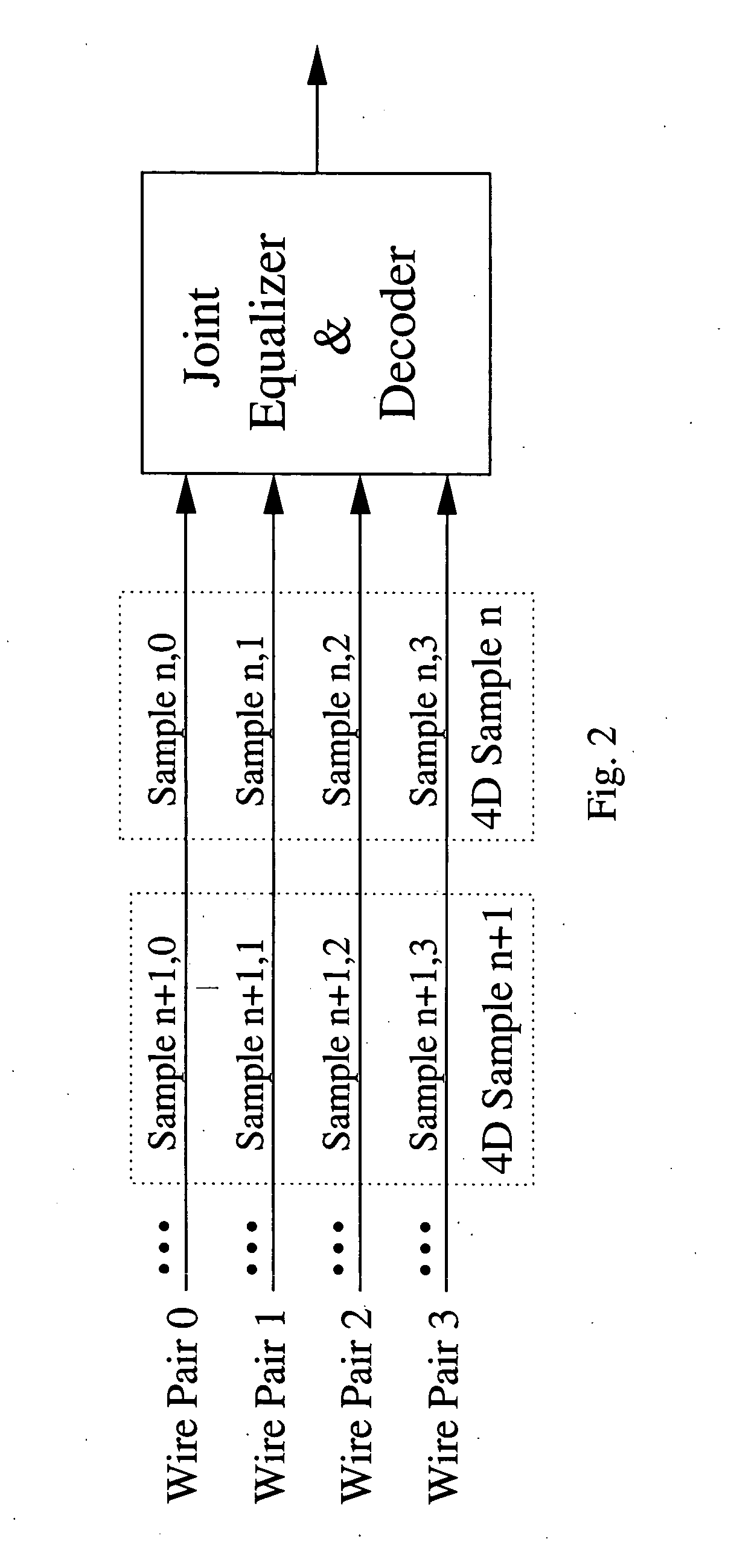Interleaved trellis coded modulation and decoding
- Summary
- Abstract
- Description
- Claims
- Application Information
AI Technical Summary
Benefits of technology
Problems solved by technology
Method used
Image
Examples
Embodiment Construction
[0017] Background on Conventional Trellis Coded Modulation and Decoding
[0018] To explain the principles of the invention better, we assume there is a communication system which uses trellis coded modulation and four pair of wires, just like in 1000BASE-T. We further assume the trellis code is also a 4 dimensional trellis code. But the throughput of the system is 10 Gbps, and the symbol rate is 833 MHz with each 1D symbol representing 3 bits of information.
[0019] The trellis coded modulation can be used in a traditional way as in 1000BASE-T, where four wire pairs share a trellis encoder, as illustrated in FIG. 1. Each time, the encoder takes 12 bits of information and converts them to a 4D symbol at a speed of 833 MHz. Each 4D symbol contains 4 1D symbols. The four 1D symbols are transmitted over the four pairs with one dimension per pair.
[0020]FIG. 2 shows the corresponding decoding scheme. To meet the throughput requirement, the joint equalizer and decoder (JED), which implement...
PUM
 Login to View More
Login to View More Abstract
Description
Claims
Application Information
 Login to View More
Login to View More - R&D
- Intellectual Property
- Life Sciences
- Materials
- Tech Scout
- Unparalleled Data Quality
- Higher Quality Content
- 60% Fewer Hallucinations
Browse by: Latest US Patents, China's latest patents, Technical Efficacy Thesaurus, Application Domain, Technology Topic, Popular Technical Reports.
© 2025 PatSnap. All rights reserved.Legal|Privacy policy|Modern Slavery Act Transparency Statement|Sitemap|About US| Contact US: help@patsnap.com



